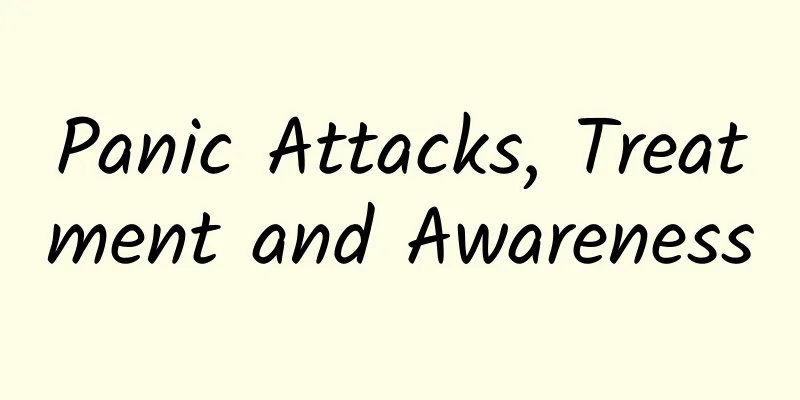Panic Attacks, Treatment and Awareness

|
introduction In daily life, we occasionally experience brief tension, fear or anxiety, which are part of normal human emotional responses. However, when these emotions erupt in an extremely intense, uncontrollable manner without obvious triggers, they may constitute what is medically known as a "panic attack." This phenomenon has a serious impact on the patient's quality of life and may even lead to social disorders and a decline in quality of life. This article aims to unveil the mystery of panic attacks and help readers understand the physiological mechanisms, typical symptoms, triggering factors, and effective coping and recovery strategies behind them. 1. Definition and physiological mechanism of panic attacks A panic attack, also known as an acute anxiety attack, is a sudden, intense state of panic that usually peaks within a few minutes and can last from a few minutes to half an hour. Although during an attack, an individual may mistakenly believe that they are experiencing a heart attack, suffocation, or other serious medical condition, in reality, a panic attack is an exaggerated psychological stress response. From a physiological point of view, panic attacks are mainly caused by the overactivation of the brain's "fight or flight" emergency system. When faced with potential threats, the sympathetic nervous system quickly starts to release a large amount of stress hormones such as adrenaline and norepinephrine, leading to physiological reactions such as accelerated heart rate, rapid breathing, increased sweating, and muscle tension. However, in panic attacks, this emergency response is mistakenly triggered, even though there is no actual danger. Typical symptoms of panic attacks Symptoms of a panic attack are varied and intense and include, but are not limited to: Palpitations or tachycardia: A feeling of your heart beating wildly, sometimes accompanied by chest tightness or pain. Difficulty breathing: Feeling like you can’t take a deep breath or you can’t catch your breath. Dizziness or loss of balance: may be accompanied by numbness, tingling, or weakness in the hands and feet. Sweating, shaking, chills, or a feeling of heat. Upset stomach, nausea, or diarrhea. Feelings of loss of control or impending death. Fear of losing reason or control. Hallucinations or hearing disturbances (such as tinnitus). 3. Triggering factors of panic attacks Although panic attacks may seem to occur without warning, some factors may increase their likelihood, including: High-stress life events: such as work pressure, interpersonal relationship conflicts, death of a loved one, etc. Specific situations or triggers: such as enclosed spaces, crowded places, high-speed driving, etc. Physiological factors: such as lack of sleep, excessive fatigue, certain medications or substance abuse. Psychological factors: such as excessive worry, perfectionism, and excessive sensitivity to physical sensations. Genetic factors: Studies have shown that panic disorder has a certain familial clustering. 4. Coping and Recovery Strategies When faced with a panic attack, individuals can adopt the following strategies to effectively cope and recover: Cognitive behavioral therapy (CBT): With the help of a professional counselor, learn to identify and challenge the irrational thinking patterns that trigger panic, and gradually face and adapt to situations that have triggered panic through exposure therapy, thereby reducing its interference with life. Relaxation training: such as deep breathing exercises, progressive muscle relaxation, meditation, yoga, etc., can help reduce daily stress levels and enhance the ability to cope with panic. Drug treatment: Under the guidance of a doctor, the use of anti-anxiety drugs (such as benzodiazepines, SSRI antidepressants, etc.) can effectively reduce the frequency and intensity of panic attacks. Lifestyle adjustments: Maintaining a regular schedule, a balanced diet, moderate exercise, and avoiding caffeine and other stimulants can help stabilize mood and improve sleep quality. Social support: Sharing your feelings with family, friends or support groups to gain understanding and encouragement can help alleviate loneliness and increase your confidence in coping with difficulties. Conclusion Although panic attacks are frightening and challenging, they are understandable and treatable. By understanding the physiological mechanisms behind them, identifying symptoms, exploring triggers, and actively taking treatment, you can master the skills to deal with panic attacks and gradually restore a sense of calm and control in your life. If you experience frequent or severe panic attacks, it is recommended to seek support and guidance from professional mental health services in a timely manner. |
<<: Everyone has their own "hemorrhoids". Find out which type of hemorrhoids you have.
>>: New healthy trend: Adults add some milk every day
Recommend
How long is the best time to have an abortion?
Many people get pregnant accidentally. When an un...
Why can't lutein photosynthesize? The nature of photosynthesis and respiration
Photosynthesis converts solar energy into chemica...
Methods of abortion in four months of pregnancy
Women undergo various prenatal examinations durin...
What are the characteristics of progesterone in hydatidiform mole
For women who are pregnant, the most important th...
I still have blood after a week of abortion.
After an abortion, a woman's lower body will ...
How can girls exercise to lose weight?
Women may become obese due to physiological condi...
Diarrhea during menstruation
Menstruation is a lifelong friend of women. When ...
What are the causes of gonococcal cervicovaginitis?
Vaginitis is a physiological disease that trouble...
Can cervical erosion cause amenorrhea?
Cervical erosion is a common "killer" t...
What are the symptoms of a girl's pregnancy?
Pregnancy is the most important stage for every g...
What are the causes of vaginal itching?
The vagina is a private part of women and also a ...
How many days after the menstrual period is the safe period
Each menstrual cycle of a woman is divided into m...
What should girls prepare for mountain climbing?
Mountain climbing is an outdoor sport that many f...
Seven key words in the field of smart cars in 2016: in-vehicle information system, ADAS, autonomous driving, and ESP are on the list
We no longer see cars as just a means of transpor...
Brown vaginal discharge at 6 weeks of pregnancy
The sixth week of pregnancy is actually a period ...









